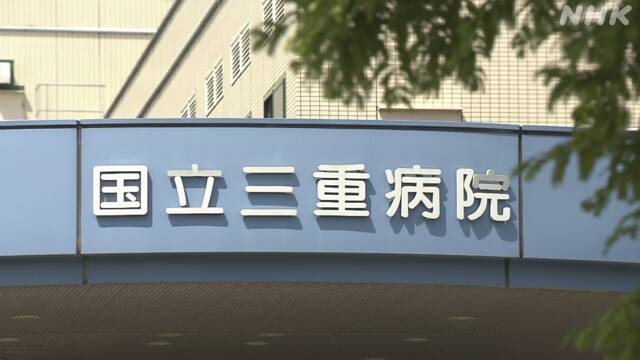In order to reduce the burden on medical sites and public health centers related to the new coronavirus, the National Governors' Association and others have expressed the opinion that we should shift to a ``fixed-point grasp'' that reports the number of infected people from medical institutions designated in advance. increase.
Experts say that the overall trend can be confirmed even with fixed-point monitoring, but they point out that it may be difficult to accurately grasp the infection status if there are few medical institutions that examine corona patients.
Fixed-point monitoring is a survey to investigate the outbreak status of diseases by having pre-designated medical institutions report the number of infected people on a regular basis.
In Mie Prefecture, as a method to grasp the infection status of the new corona, we will grasp the total number of newly infected people, and the research group of the Ministry of Health, Labor and Welfare will confirm the number of people who have been diagnosed with cold symptoms such as fever since last year and the infection of the new corona. At the same time, we also conducted a fixed-point survey of the number of people who were infected, which was reported weekly by 70 medical institutions in the prefecture.
According to Seishu Taniguchi, director of the National Hospital Organization Mie Hospital, which is the center of the research group, almost all internal medicine and pediatric departments that have reported the number of influenza infected people in Mie Prefecture are participating in the fixed-point grasp of the new corona. So far, we have confirmed the same trend as the trend in the number of infected people, which can be seen from the current grasp of the total number.
However, Director Taniguchi points out that if there are few fixed-point medical institutions that examine corona patients, it may be difficult to accurately grasp the infection status.
In addition, it is said that the purpose of grasping the total number so far is to isolate the infected person, identify close contacts, and lead to appropriate medical care, and should be considered separately from the investigation to grasp the infection status. .
Director Taniguchi said, ``Since many medical institutions in Mie Prefecture are examining coronavirus, even if it is confirmed at a fixed point, it will be representative. It is premised on having an examination at an institution.In the future, we need to discuss how to manage and treat the new corona and how to understand the trend of infection."
Medical institutions cooperating with fixed-point monitoring “Not a big burden”
Ochiai Pediatric Clinic, located in Kameyama City, Mie Prefecture, is one of the medical institutions cooperating in the fixed-point grasp of the new coronavirus in Mie Prefecture.
This clinic has a fever outpatient clinic, and Director Hitoshi Ochiai lists the patients who have visited them complaining of fever and sore throat in a notepad and writes down the results of the new corona test.
Then, on a report form for fixed-point detection of influenza, fill out a form that has additional columns such as ▽ people with cold-like symptoms and ▽ the number of people who have tested positive for the new coronavirus, and fax it to the prefecture. reporting.
In the week leading up to August 20, 136 of the more than 200 people who complained of fever and other symptoms were examined in the four days excluding the Obon holidays, and 74 of them were confirmed to be infected with the novel coronavirus. However, the report itself is simple and does not pose a heavy burden.
Director Ochiai said, ``For pediatricians, the hurdles for reporting fixed-point observations are not high.
Expert "Difficult to analyze in detail and work out countermeasures"
Some experts point out that a complete shift from monitoring the total number of people infected with the new coronavirus to a fixed point monitoring may hinder detailed analysis of the infection situation.
Hiroshi Nishiura, a professor at Kyoto University who specializes in mathematical epidemiology and is conducting data analysis at an expert meeting of the Ministry of Health, Labor and Welfare, said, ``With fixed-point monitoring, it is possible to grasp the trend of whether the number of infected people is increasing, but it is possible to see the daily increase or decrease. It's difficult to grasp minute changes, and since the data is updated once a week, the sense of speed is different from the current grasp of all numbers."
Regarding the impact on the analysis, Professor Nishiura said, ``In the future, I think there will be situations where medical care will be tight or new mutated viruses will start to spread, and there will be situations where some kind of countermeasure will be necessary. As a result, it will be difficult to estimate the effective reproduction number, which indicates how many people one person will infect, and to analyze short-term trends in the number of infected people in real time. The data also includes vaccination histories, and we used the data to estimate the percentage of people with immunity, but that kind of analysis will also become difficult. said.
On top of that, Professor Nishiura said, "In the future, if we are going to shift to fixed-point monitoring, we will have to think of a way to solve the lack of data. What is important is not to rely too much on one survey, but to collect data in multiple layers. It is necessary to take measures such as always carrying out in parallel.It is necessary to prepare from this point, including detailed extraction surveys such as those being conducted in the UK."

